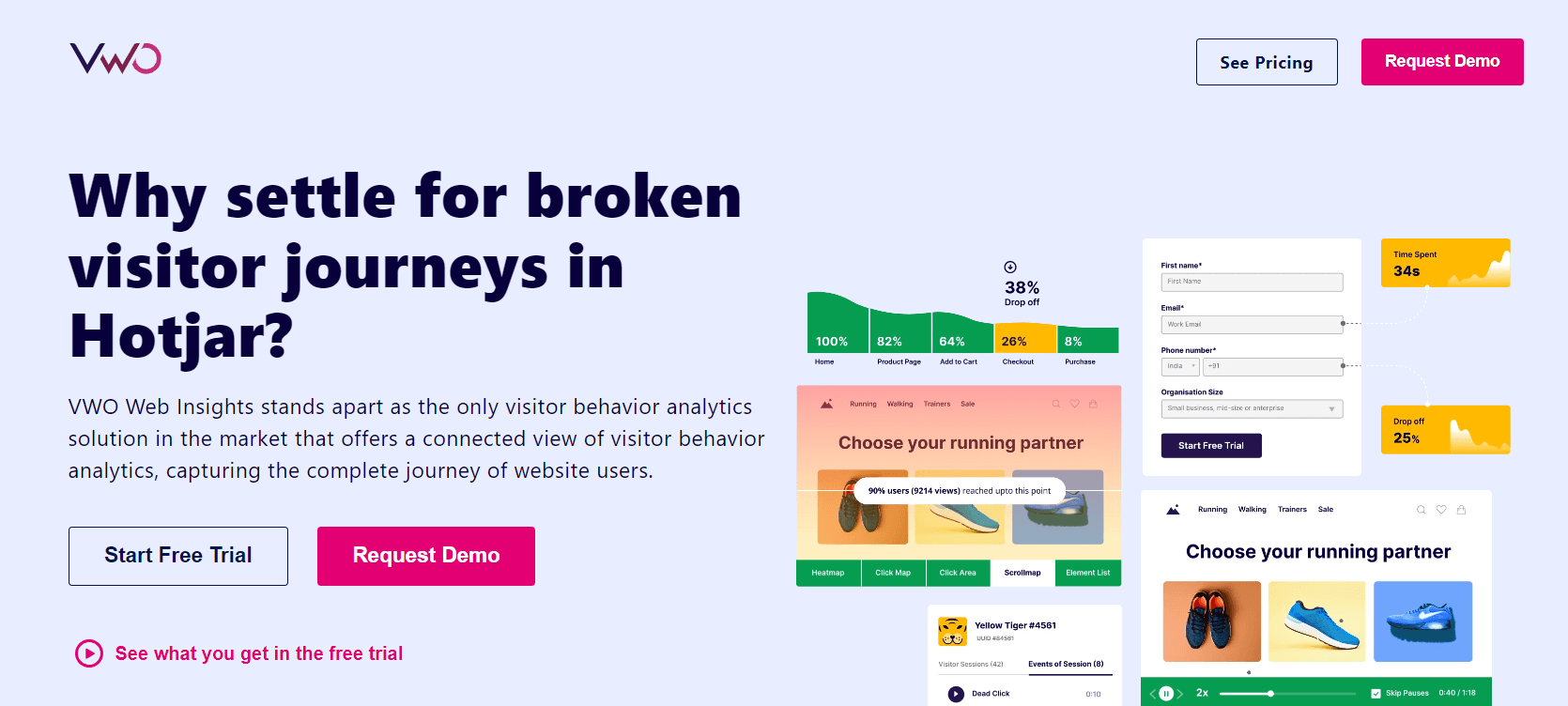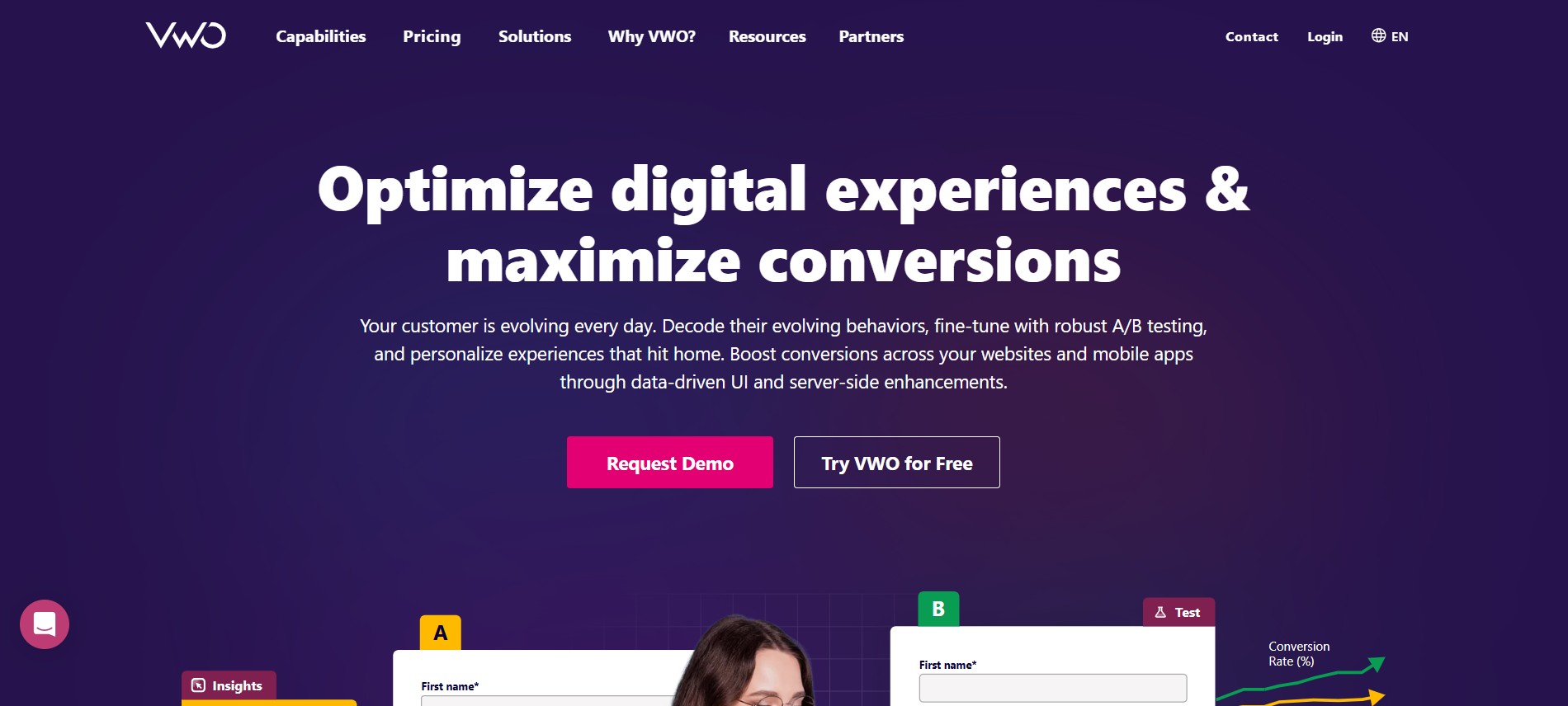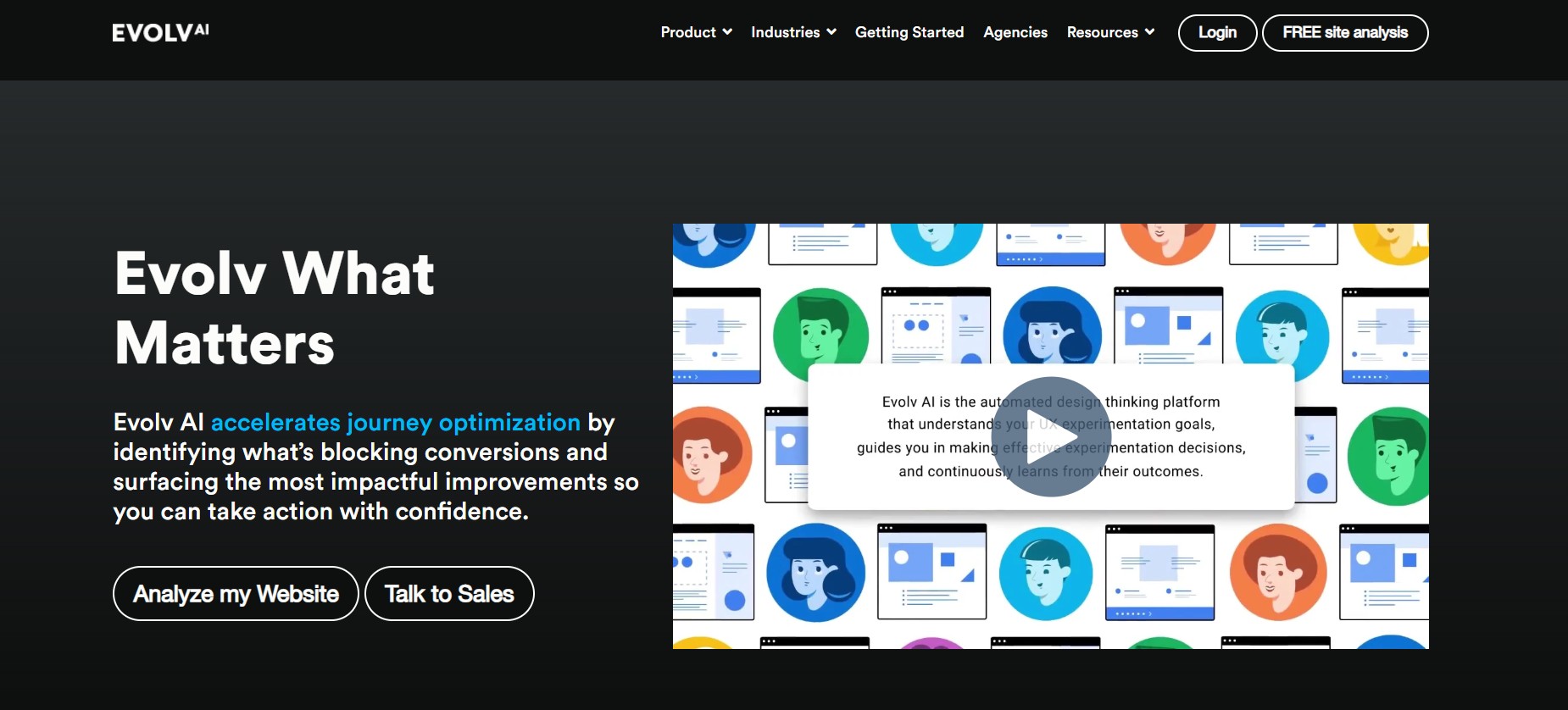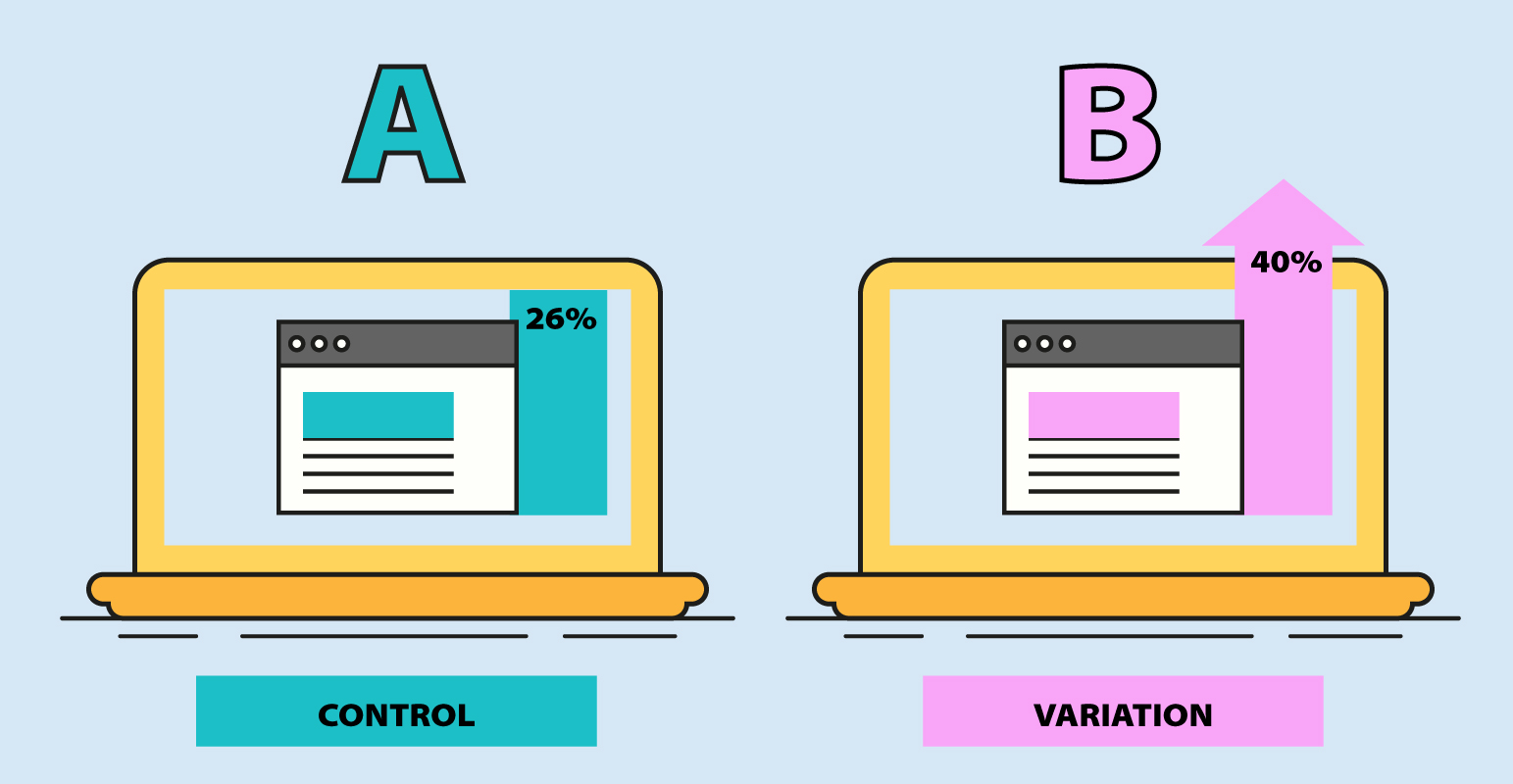Your website might be getting a lot of traffic, but if people aren’t signing up or placing orders, something’s missing. What’s stopping them from taking the next step?
The good news? Things can get better.
That’s where Conversion Rate Optimization (CRO) comes in. CRO helps businesses turn more visitors into customers, leading to a stronger ROI without needing more traffic.
Curious about what CRO really is and how it works?
This article will walk you through the essentials of CRO, with real-world strategies and examples to show you exactly how it works, especially in the world of e-commerce.
Let’s break it down and help you boost your conversions!
What is CRO (Conversion Rate Optimization)?
CRO works to enhance a website to encourage visitors to become customers with a simple and appealing approach. CRO helps you gain more from your site visitors while saving money on ads.
Businesses aim to change the website or landing page to get more people to complete a chosen goal, be it making a purchase or filling out a form. CRO maximizes the existing traffic by converting visitors into customers and driving revenue. Companies keep an eye on customer actions, test new ways to improve, and make their designs smarter based on what they learn.

Now you must be thinking that this sounds like on-page SEO. On-page SEO is often confused with CRO by website owners, as both deal with improving things on a website page. Even though their aims are not the same. To better understand how these two practices differ and complement each other, it’s worth revisiting the fundamentals of on-page SEO, which focuses on content structure, keyword usage, and meta elements that improve visibility, while CRO zeroes in on turning that visibility into action.
On-page SEO is usually the work of a marketer, whereas CRO is the job of another expert who wants to increase user interactions. Let’s look at a comparison to learn what makes these different.
| Aspect | On-Page SEO | CRO |
|---|---|---|
|
Goal |
Increase search engine visibility | Increase user actions and conversions |
|
Focus |
Keywords, meta tags, content quality | CTAs, layout, user behavior |
| Measurement | Rankings, traffic |
Leads, sign-ups, sales |
|
Tools Used |
Yoast SEO, SEMrush |
Hotjar, Google Optimize, A/B testing |
| Outcome | Higher search rankings |
Better conversion rates |
Why CRO Matters to Your Business?
Conversion rate optimization should not be dismissed as a passing term. It is necessary for continued growth. Organizations that invest in CRO get.
- Improved ROI
- Reduced customer acquisition costs
- Increased user satisfaction
- Drive more revenue from the same amount of traffic
To measure CRO, use this simple formula:
Conversion Rate Formula
- Conversion Rate = (Number of Conversions / Number of Visitors) × 100
Understanding CRO (conversion rate optimization) is the first step toward unlocking your website’s full potential. Now, let’s explore the key benefits of CRO and how it drives better results.
What Benefits Do We Gain from Using Conversion Rate Optimization?
CRO increases conversions from their visitors, regardless of how much traffic they get. By updating the site’s design and improving what users see, CRO increases user involvement and conversions. The main purpose is to increase current traffic and get the most out of marketing efforts. The key benefits include,
-
More Value from Existing Traffic
By improving conversion rates, you can increase revenue without attracting more visitors. This makes CRO a value-driven approach for your business.
-
Enhanced User Experience
A smooth, intuitive user journey encourages action. CRO strategies focus on usability, speed, and content alignment, all of which improve user satisfaction.
-
Data-Driven Business Decisions
With CRO, every change is backed by data. This ensures you are not just guessing what works but knowing what drives conversions. To enjoy the advantages of CRO, companies should improve their techniques and ensure all changes lead to higher conversions.
Now, we will look at how companies can carry out successful conversion rate optimization strategies.
How Can the Most Successful CRO Strategies Improve Results?
The main purpose of businesses is not just to bring visitors to your website but to change them into paying customers. CRO helps businesses change people who visit frequently into active customers, revealing new paths to better business growth.
1. A/B Testing and Multivariate Testing
These are foundational CRO techniques. A/B testing involves comparing two pages, and multivariate testing looks at several page elements together. Both help determine what resonates most with users.
2. Improving CTA Visibility and Copy
Strong Calls-to-Action (CTAs) are vital. Use bold colors, persuasive language, and strategic placement to encourage clicks. Ensure your CTA communicates the benefit.
3. Landing Page Optimization
Your landing page is the first impression. Optimizing headline clarity and layout with clear form fields significantly boosts conversions.
4. Personalization and Behavioral Targeting
Content personalization can be done through conversion rate optimization tools by using data on a user’s activities or location. It is easier to understand ads and more likely to turn into sales.
5. Mobile Optimization
Since almost half of users access the Internet from mobile devices, your website must be fast and functional on every screen. Improving how your website works on mobile devices is required in any CRO approach.
No matter how smart your CRO strategy is, it will not help unless you use reliable tools. With no analytics or optimization software, making informed changes is almost impossible for businesses. CRO tools help you understand how users behave and optimize important elements for the most conversions.
Which Tools Are Essential for Conversion Rate Optimization?
With the correct CRO tools,and a customizable checkout infrastructure, it is easy to find what stops people from taking action. Get the information you need and keep yourself in charge.
These tools show what needs to be done, helping every contact point work better to attract more customers and sales. Some of the most effective conversion rate optimization tools for this are,
1. Hotjar

A user behavior analytics tool offering heatmaps and surveys. It visualizes where users click, scroll, and drop off, helping businesses optimize layouts and interactions. Hotjar’s feedback tools let companies understand visitor intent, improving conversions through user-centered design changes.
2. Crazy Egg

Crazy Egg provides click tracking and scroll maps to highlight the engagement hotspots and exit points. Its colorful data reports segment clicks by referral sources, guiding businesses in optimizing different audience experiences. It is ideal for improving CTA placement and navigation for better conversions.
3. Unbounce

Unbounce helps optimize landing pages by giving advice guided by AI. Users can edit pages by dragging and dropping items, test variations of pages and benefit from smart traffic, which allows businesses to make strong pages without writing code. Looking at visitor behavior, Unbounce means users are more likely to see useful content, helping them stay involved and increase sales
4. VWO (Visual Website Optimizer)

VWO helps companies improve their websites for higher conversion rates using artificial intelligence. By doing so, companies can check different versions of pages, look at how visitors behave and match their experience to visitors, helping sales and earning more customer attention.
5. Evolv AI

Evolv AI is an AI-based CRO tool that keeps making website experiences better while people are on your site. It tests various elements together using machine learning to see which brings the most conversions. Evolv AI’s automated approach allows companies to reaffirm their online strategies and get the best engagement from customers.
Ever wondered how some businesses dramatically boost conversions while others struggle? The secret lies in effective CRO strategies. Let’s dive into case studies where small changes made a big impact.
How Do Real Conversion Rate Optimization Examples Demonstrate the Impact of CRO?
Cases from actual companies reveal how leveraging CRO can increase business performance. To understand its impact better, let’s look at a few important case studies.
Case Study 1: E-commerce Website
An online fashion retailer changed their CTA button from green to red and saw a 20% increase in checkouts. A simple tweak made a big impact.
Case Study 2: SaaS Business
A software company used A/B testing to rearrange its pricing page layout. This reduced bounce rates by 30% and increased trial sign-ups.
Case Study 3: Lead Gen Site
A real estate website personalized its landing page headlines by location. This led to a 25% boost in contact form submissions.
Examples from these case studies reveal the power of data in making websites more successful in converting users. Let’s look at the methods used by businesses.
Which key metrics should you track for CRO?
Every choice made by the CRO should be based on statistics. Checking and examining key performance indicators allows businesses to make important improvements and obtain the best outcomes. Use these metrics to make your CRO strategy work effectively.
| Key Metric | Description |
|---|---|
|
Conversion Rate |
The percentage of users who complete the desired action. |
|
Bounce Rate |
Lower bounce rates often correlate with better conversion experiences. |
| Average Session Duration |
Indicates how engaging your content is. |
|
Click-Through Rate (CTR) |
Useful for evaluating CTAs and links. |
Before you optimize, establish baseline metrics. Then, define realistic targets for each CRO initiative. This allows for clear, measurable improvement over time.
Even though many businesses turn to conversion rate optimization approaches, the outcomes are not as good as they’d hoped. Why? In many instances, they make mistakes that reduce the chances of converting. We’ll look at typical errors and recommend ways to avoid them.
Which CRO Mistakes Could Be Hurting Your Results?
Your website could do an outstanding job of turning visitors into customers if you didn’t make these everyday CRO mistakes. Resolving these mistakes can help your company perform far better. It’s time to discuss the errors that could be holding you back from your goals.
- Ignoring mobile optimization – A significant portion of web traffic comes from mobile users. If your site isn’t mobile-friendly, you risk losing potential customers. Prioritize responsive design to ensure smooth navigation across all devices.
- Running tests with small sample sizes – small test groups may produce skewed results. Ensure tests run long enough and include enough users to yield statistically significant findings.
- Changing multiple elements at once – Modifying too many aspects simultaneously makes it difficult to identify what influenced conversions. Test one change at a time for clearer results.
- Ending tests too soon before statistical significance is reached – Rushing decisions based on early data can be misleading. Allow tests to gather enough engagement before concluding success or failure.
Final Words
CRO is all about getting your website to perform as you intend, so it can generate conversions. Getting your CTAs right, A/B testing, and using tools like Hotjar and Optimizely, CRO helps you turn uninterested users into active shoppers. Continuous effort is needed because management involves growth and improved efficiency.
Take baby steps, keep an eye on the outcome, and repeat. If you have a startup or an expanding business, using effective conversion rate optimization strategies, the best conversion rate optimization tools, and understanding successful examples can boost your business online. Now that you know what CRO is, you should start optimizing, testing, and getting more customers.
FAQs
1. Does using Conversion Rate Optimization mean you don’t have to spend money on ads?
A: CRO can make your website work better, but it still doesn’t act as a substitute for ads. Since the traffic you already have is more useful, you can cut down on advertising costs. However, combining ads with CRO is usually the best way to maximize results.
2. Can an SEO professional handle CRO tasks?
A: A lot of SEO professionals handle straight CRO activities such as revamping the site layout, CTAs, and how content is arranged. Yet, advanced CRO often means you should understand UX design, A/B testing, tracking data, and behavioral insights, all skills that are not part of standard SEO work.
3. Would Conversion root optimization tools be useful if my website already attracts plenty of visitors?
A: Absolutely. When many people visit but few make a purchase, that’s a wasted opportunity. CRO tools help more people become customers or leads, which makes your return on investment better without needing extra money for ads. For websites that draw a lot of traffic but disappoint with results, this is one of the best things to do.
4. Are Conversion rate optimization strategies only about website changes, or do they truly belong to marketing?
A: By improving both what visitors see and their experience, businesses can turn them into customers with CRO strategies. It concentrates on improving CTAs, page design, and navigation to see more people convert into customers. Many firms turn to CRO to achieve higher revenue and a more efficient online approach.
5. What payment plan is used for conversion rate optimization services?
A: Most CRO services charge on an hourly basis to give businesses the freedom and openness they need. By paying for time, clients can see briefly how much they are spending and the results of their investment. Because of this model, companies can make visible improvements, perfect their plans, and increase sales without too much cost.








